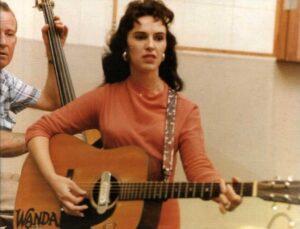In German, the word “Fruehauf” means “early riser.” For August Charles Fruehauf, no name could have been more appropriate.
Born in 1868 in Fraser, Michigan, Fruehauf was a blacksmith by trade, first learning the ins and outs of the job at the age of 14 as a blacksmith’s apprentice. However, after setting out on his own and beginning his career as a one-man operation, Fruehauf suffered setbacks when two fires destroyed his blacksmith shops in Fraser.
Instead of giving up, Fruehauf and his wife pulled up stakes and relocated to Detroit to start anew. Once established in the Motor City, he quickly added staff and facilities, eventually operating a blacksmithing business that covered several acres in eastern Detroit. In the meantime, he added carriage (or wagon) building to his list of services.
But the oncoming horseless carriage turned out to be the catalyst for a new industry, and Fruehauf rose to the occasion.
In 1914, Fruehauf was approached by a local lumber merchant approached and asked to build a contraption that could be affixed to the merchant’s Model T and used to transport a boat to Upper Michigan.
Fruehauf, not a man to shy away from many challenges, thought this a feasible task, so he started work on a design. He called his invention a “trailer,” named after the 1890 application of a “vehicle pulled by another” (typically a small carriage drawn by a bicycle). The trailer was connected to the Model T by a pole that acted as both a tongue and brake.
Fruehauf’s invention was unique in that it had no front axle; because of the lack of axle, he coined the term “semi-trailer.” In case you’ve ever wondered about the origin of the “semi” often used in referring to big rigs today, now you know!
In any event, the trailer successfully hauled the lumber merchant’s boat to the lake. The merchant was so impressed with the new gadget that he ordered several more for his large lumberyard. Using Model Ts to pull trailers when delivering lumber, he predicted, would make for a more efficient process and eliminate the need for housing and upkeep of horses and mules.
For these, Fruehauf substituted a platform for the rigging that had connected the boat to the trailer, and he designed a stronger undercarriage. It was a wild success.
Before long, demand for Fruehauf’s trailer increased — and not just among lumber merchants. Each new customer seemed to have a different application for the tow-along, and Fruehauf modified his initial creation to meet various customers’ needs.
Soon, the Fruehauf Trailer Co. was manufacturing closed vans, tank-equipped trailers, refrigerated trailers and dump trailers. As virtually the only U.S. company in the business of manufacturing trailers, Fruehauf almost had a monopoly on the product.
He promoted his business by advertising: “A horse can pull more than it can carry — so can a truck.”
Demand for various designs of trailers did not come without problems. But by employing a top engineering staff, Fruehauf was able to overcome most of those obstacles, adding patents with each development.
In just its first quarter-century in business, the Fruehauf Trailer Co. registered over 1,000 patents, many of them for U.S. military equipment. Among those inventions were the automatic hitch, the tow lift and the torsion bar suspension.
By 1918, the company was profiting $150,000 a year, and orders far outstripped the capacity to fill them. As Roy Fruehauf, August’s son, said, “The blacksmith shop was literally bulging at its bay windows with workmen and trailers.”
The answer to this problem was to buy new land, something made possible when the company was incorporated in 1918. August Fruehauf was named president of the company and his wife vice-president. Roy, along with his brothers Harvey and Otto, also joined the company in administrative roles. By 1925, sales reached $1.25 million.
Just as his company was reaching its peak, August Fruehauf passed away in 1930. Fruehauf Trailer Co., however, continued to gain momentum.
As Roy Fruehauf said in a speech celebrating the 40th anniversary of Fruehauf’s first trailer, “Each year we grew a bit — each year more and more Fruehauf trailers began to take their places on the American road — and each year more and more of the things we Americans eat, wear, and use were carried in trailers bearing the name my father had made such a vital part of American business life.”
In 1937, a total of 4 million trucks and trailers were on the nation’s highways — and almost all of those trucks pulled Fruehauf trailers.
Beginning with World War I, the Fruehauf Trailer Co. became a primary supplier to the U.S. military. It seems that Fruehauf was the only company with the knowledge, skill and efficiency to meet quickly increasing war effort needs.
Fruehauf answered the call for an “Arsenal of Democracy” with numerous innovations to its standard trailer. The company manufactured new applications, including mobile hospitals, post office trailers, communications centers and laundry centers.
During World War II and the Korean War — Fruehauf added searchlights, generators, anti-aircraft vehicles, tank carriers, a missile-launching platform and trailers capable of bearing 60 tons of equipment. Fruehauf even helped design amphibious landing vehicles like the LARC-60, which was used to transport vehicles from ship to shore.
In the last half-century, Fruehauf has been joined by countless other trailer manufacturers. In fact, the company itself even sold to Wabash National in 1997.
But the Fruehauf name lives on, with the modern Fruehauf Trailer Corp. based in Bowling Green, Kentucky. Just take a look. You’ll see the Fruehauf name every day on trailer mudflaps on virtually every mile of interstate in the U.S.
Since retiring from a career as an outdoor recreation professional from the State of Arkansas, Kris Rutherford has worked as a freelance writer and, with his wife, owns and publishes a small Northeast Texas newspaper, The Roxton Progress. Kris has worked as a ghostwriter and editor and has authored seven books of his own. He became interested in the trucking industry as a child in the 1970s when his family traveled the interstates twice a year between their home in Maine and their native Texas. He has been a classic country music enthusiast since the age of nine when he developed a special interest in trucking songs.








